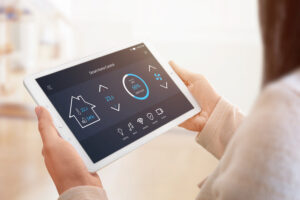Eco-friendly energy technologies play a pivotal role in creating a greener world. From solar panels to energy-efficient buildings, these innovations reduce environmental damage while simultaneously saving people money. Renewable energy sources tend to leave behind smaller carbon emissions than fossil fuels; however, their manufacturing, transportation, and installation still produce emissions. Integrating eco-friendly energy technologies into industrial settings enables companies to reduce both operational costs and carbon emissions.
1. Renewable Energy Sources
Renewable energy sources like solar power, wind power, bioenergy (organic matter used as a fuel), hydroelectricity (including tidal power), and geothermal energy all produce far fewer emissions than fossil fuels over their lifecycles. Transitioning away from fossil fuels towards eco-friendly technologies will help mitigate climate change while safeguarding our environment.
Integrating eco-friendly energy solutions into residential and commercial settings can significantly lower electricity bills and carbon footprints. Solar panels, energy-efficient HVAC systems, and smart technologies enabling real-time monitoring and optimization of energy consumption all have the ability to save on expenses and lower carbon footprints. Financial innovation, technological development, and policy reform can accelerate renewable energy adoption by making it more cost-effective and accessible.
2. Energy Efficiency Solutions
Green technology solutions can significantly lower energy costs and carbon emissions while supporting environmental sustainability and upholding Earth’s delicate ecological balance.
Example eco-friendly technologies include renewable and sustainable sources like solar, wind, and hydroelectric power; energy-efficient appliances and systems that reduce electricity bills; electric vehicles (EV), battery storage systems, and geothermal heat pumps designed for residential use; waste management technologies that convert trash into renewable fuel sources and other useful materials; as well as waste conversion technologies that transform trash into useful material products like renewable fuel or recyclable products.
Businesses can increase operational efficiency, boost brand reputation, comply with regulations, and contribute to a healthier planet by adopting eco-friendly technologies. Tools like energy management software, smart thermostats, solar panel monitors, and carbon footprint calculators help companies track and optimize performance.
3. Smart Grids
Eco-friendly energy technologies reduce greenhouse gas emissions and dependence on fossil fuels, improving air quality, supporting biodiversity, and lowering water use. Businesses that adopt eco-friendly energy solutions may save operational costs, increase brand recognition, and comply with regulations more easily and better by adopting eco-friendly solutions—but financial barriers, technological limitations, or infrastructure restrictions may limit deployment.
Renewable energies that harness solar, wind, and hydroelectric power without emitting greenhouse gases are one possible solution, as is smart grid technology. These advanced systems help connect energy sources to customer demand through digital communication technologies such as digital radio frequency identification and measurement systems; smart feeder switches may also help improve connectivity. Furthermore, ongoing research on battery technology could address storage concerns while simultaneously lowering initial costs.
4. Carbon Capture and Storage
Environmentally friendly energy technologies help us reduce our carbon footprint and protect the planet. For instance, solar and wind power generate electricity without emitting greenhouse gases, while their extraction has less negative environmental impact than fossil fuels.
As atmospheric CO₂ levels are projected to reach dangerously high levels by 2050, it’s imperative that we develop strategies for mitigating emissions at their source. Carbon capture and storage (CCS) technologies remove carbon dioxide emissions from power plants and industrial processes before they enter the atmosphere.
These systems transport and store CO₂ in deep underground geological formations for permanent storage or convert captured carbon to productive use for building materials or enhanced oil recovery, among other purposes.
5. Energy Storage Systems
Eco-friendly energy technologies are revolutionizing how we power our world. Solar, wind, hydroelectric, and geothermal energies harness renewable resources without emitting greenhouse gases; energy storage systems ensure reliable supply while supporting integration of renewables into grid systems.
Pumped hydro and batteries remain cornerstones of energy storage technology, but innovative approaches offer greater flexibility and efficiency. Microsoft and oil giant Saudi Aramco recently joined forces to back a start-up that uses electricity to superheat bricks that generate power when needed. Other mechanical storage technologies include flywheels and compressed air storage . Molten salts, mineral oils, or metals may also be used to store thermal energy that can later be redeployed to generate power.
6. Smart Thermostats
Smart thermostats help homeowners reduce energy use by providing remote control of heating and cooling systems, including setting a geofencing feature to adjust temperatures based on your location and avoid unnecessary heating/cooling while away. Studies cited by smart thermostat manufacturers demonstrate their products can reduce energy costs by 10-15% when compared with traditional programmable thermostats, particularly for homes in temperate climates where heating and cooling account for 50% of total energy use.
Smart thermostats also provide users with valuable insight into their energy consumption habits, enabling them to tailor their schedule and participate in energy programs designed to reduce demand spikes without needing older, polluting “peaker” plants to supply the excess power required.
7. Energy-Efficient Appliances
Energy-efficient appliances and equipment offer consumers an efficient, cost-effective means of meeting consumer demand without contributing to greenhouse gas emissions or necessitating additional energy production. Their benefits are especially evident when used for household appliances like refrigerators and washing machines.
Energy efficiency also reduces energy usage by making current resources last longer and being used more efficiently, and investing in eco-friendly appliances whenever possible, such as those rated with the highest CEE Tier rating corresponding to ENERGY STAR “Save More” standards, is also advised. Utilizing energy-efficient appliances can help homeowners reduce utility costs and stay more consistent as energy rates fluctuate throughout the year. Energy costs make up a considerable portion of many homeowners’ monthly expenses.
8. Energy Management Software
Businesses can use energy management software to coordinate operational and environmental data and achieve their sustainability goals. This cloud software can help them reduce costs and carbon emissions while aligning their energy initiatives with broader sustainability initiatives.
Monitoring, data analytics, and KPI measurement enable businesses to identify cost-saving opportunities with ease through monitoring. This enables them to spot inefficiencies in consumption policies and identify areas for improvements. Some EMS solutions also support demand response, encouraging businesses to operate equipment during off-peak periods to ease pressure on electricity grids and lower carbon emissions. This strategy may apply to heat pumps, electric vehicles, or photovoltaic (PV) systems.
9. Energy Audits
Energy audits can play a pivotal role in helping manufacturing plants reduce their environmental footprint and implement eco-friendly production practices. Energy audits can uncover cost-saving opportunities, boost efficiency, lower emissions, and align with international sustainability agreements.
Step one in performing an energy audit is determining its scope. A preliminary energy audit provides an overall look at energy consumption without diving deep into individual systems and is ideal for finding big waste areas such as bills or treasure hunts, plus using the PFT air infiltration measurement technique to detect hotspots or air leaks.




